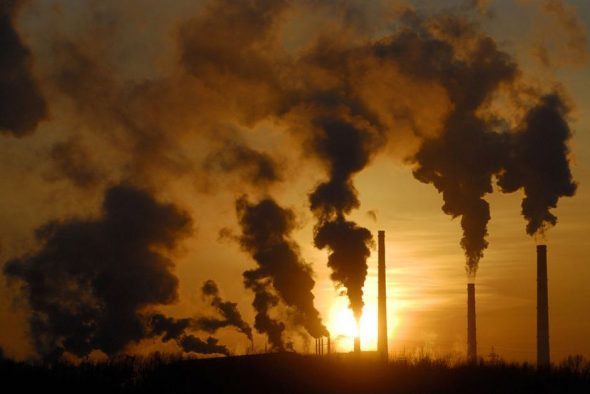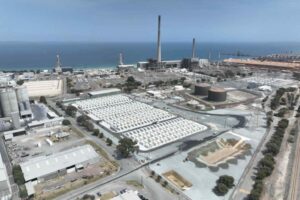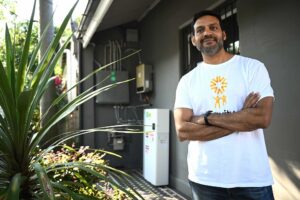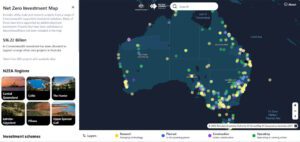In line with our earlier update, Environment Minister Greg Hunt will today announce that Australia’s greenhouse gas abatement task to meet its 2020 emissions reduction target has fallen “below zero”, meaning that Australia will meet its 2020 target.
While we will officially meet our Kyoto target, Australian emissions will not fall to -5 per cent on 2000 levels by 2020.
Australian emissions are projected to grow from today (currently -2 per cent on 2000 levels) through to 2020, increasing 6 per cent to be plus 4 per cent on 2000 levels by 2020, well short of the -5 per cent target.
Below, we summarise how Australia’s Kyoto target can be met, despite emissions continuing to grow.
What is an “abatement task” and how is it derived?
· Australia’s “abatement task” represents how much we are projected to be over our carbon “emissions budget” to meet our 5 per cent emissions reduction target under the Kyoto Protocol.
· Our budget is set between 2013 and 2020, so if we “overspend” in the initial years, spending must decline in future years to stay within the budget. Inversely, if we beat our target in the initial years, we are able to increase spending in future years, and still meet our target.
· Australia’s abatement task, as calculated in March 2015, was 365 million tonnes – meaning that Australia was projected to be over budget by 365 million tonnes to meet our target.
· Subtracting Australia’s accounting carry-over credit (129 million tonnes) as a result of coming in under-budget in the previous commitment period (2008-12), the remaining abatement task was declared to be 236 million tonnes.
· The Environment Minister will today announce an new projections reduced by 264 million tonnes, bringing Australia’s projected overspend to “sub-zero”, at minus 28 million tonnes.
· As we projected in March, this is due to a downgrade in Australia’s official emissions projections as a result of slower economic activity in the LNG production sector and Coal Mining sectors. We earlier forecast that Australia’s official emissions projections were “high”, with 200 million tonnes expected to be removed from our abatement task, bringing Australia’s Kyoto target (carbon budget) within reach.
· We estimate that more than 80 per cent of today’s 264 million tonne downgrade is due to lower economic activity. Less than 20 per cent is due to abatement purchased by the Emissions Reduction Fund. This is in line with our earlier expectations that the ERF alone would not drive enough emissions reductions to meet Australia’s 2020 target.
How can Australian emissions grow, yet we still meet our Kyoto target?
· While we will meet our carbon budget commitment established by Kyoto, Australia is in the unique position where it can grow its emissions from today and still meet its emissions budget to 2020.
· Australian emissions are not projected to fall to goal of 5 per cent below 2000 levels by 2020. Instead, we project emissions will grow from today increasing 6 per cent, to be 4 per cent above 2000 levels by 2020.
· Australia’s projected emissions will be driven by the Electricity sector, Coal mining, and LNG production sectors, plus increased land-clearing. In particular, new LNG facilities such as Gorgon, Wheatstone, and APLNG are set to become operational in 2016, while new coal mines including Maules Creek and Grosvenor will come online over 2015 to 2017.
· As these new facilities come online, emissions invariably will increase.
· Emissions growth will continue despite the Emissions Reduction Fund (ERF). While the ERF may result in increased carbon removals though forest regeneration, Australia’s emissions growth is still significantly outpacing abatement contracted under the ERF by around 3 to 4 times.
· After two auctions, the ERF has contracted 93 million credits (ACCUs), to be delivered over the next 10 years. Over the same period, we project real national emissions will grow by more than 350 million tonnes.
· As a result, the ERF by itself will not reduce Australia’s net emissions growth.
Implications of Australia’s emissions growth
· While we are able to increase our emissions and still meet our 2020 target, emissions growth will increase Australia’s 2030 abatement task, given emissions increases from today will need to be reduced later to meet our long-term target.
· Emissions growth therefore comes at a cost, as short-term emissions increases will unwind past emissions gains. This compounds the rate at which we must reduce emission in the future – and the cost of doing so – with more abatement required over a shorter timeframe.
Hugh Grossman is head of research at Reputex.









